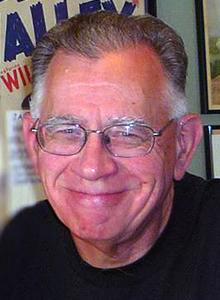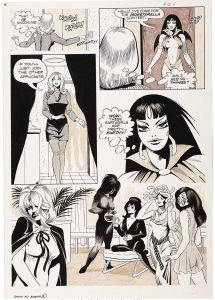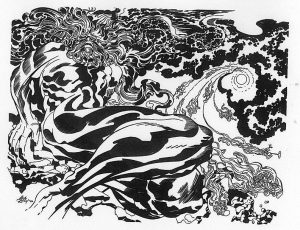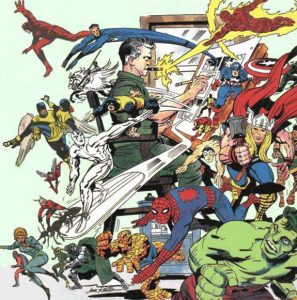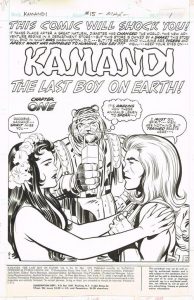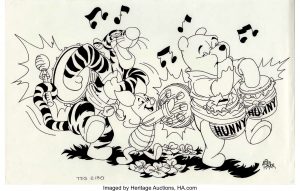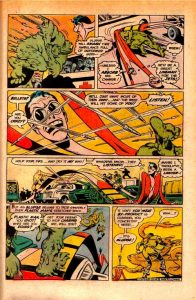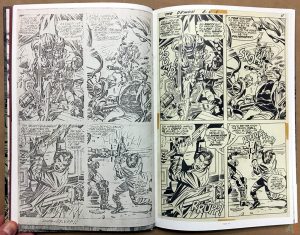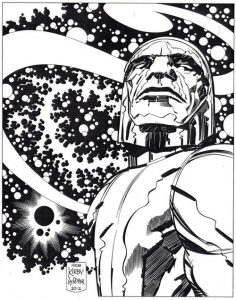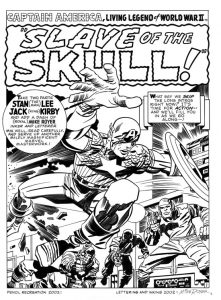MIKE ROYER: INKER OF FOUR WORLDS
Not many comic-book inkers ply their talents with equal skill in multiple fields, but Mike Royer’s clean lines can be found in comics, films, animation and consumer products. Michael W. Royer was born and raised in Willamette Valley in Oregon. After working hard and then saving and borrowing money, he attended art school. Unfortunately for Mike, it was hard to work daily shifts and apply the needed focus on art studies. Although he returned home from that school, he doesn’t consider it a loss. Learning important life lessons, such as avoiding an amorous landlady, Mike knew he wanted to get into the business. However, he didn’t know how to get there.
Royer isn’t the type of guy to give up. At the age of 23, he drew and Edgar Rich Burroughs story, “The Wizard of Venus,” with permission from Hulbert Burroughs. Originally wanting to meet Russ Manning, also a Burroughs fan, he didn’t get a chance to meet Manning. This was not an unfortunate tale, because this quickly taught Mike the importance of connections. He met fanzine editor Camille “Caz” Cazedessus, who talked to Manning about Mike. Many months after sending samples, Mike received a letter from Manning offering him an assistant job.
Telling his employer he was taking a month-long vacation, he and his family put half of their belongings in storage and the rest in a U-Haul trailer and move to southern California. Royer worked with Russ on weekends and nights, with a day job of paint salesman and credit manager. Almost a year later, Russ mentioned GrantRay-Lawrence Animation was looking for artists, but especially ink artists. With Russ Manning’s help, Royer met Mike Arens [later lead cartoonist for Petersen Publishing’s CARtoons magazine]. Now Mike was working on what he called “by today’s standards, extremely cheap and crude Marvel superheroes cartoons” and filling them out with limited animation and lip movement. He and his team created new stories for the then-new Sub-Mariner series.
Mike Arens wasn’t just a coworker of Mike Royer. Also serving as mentor, Arens taught Royer that you never want to the be the person turning down a job offered by an editor. Too often, Royer says, art managers would hear “I don’t letter.” Although Royer did penciling and lots of inking, he learned lettering from Arens. He learned a lesson that people in comic book lettering and drafting learn: Lettering means drawing—not writing—each letter. If you read the Batman newspaper comic strips in the mid-1960s, you probably saw some of Mike Royer’s lettering.
By that time, there were some layoffs. Manning was asked by Western Publishing for more work but said he needed Mike as an assistant. The publishers said there wasn’t enough money. But after a call from Chase Craig, Mike’s first job at Western was the pencil work for a Frame-Tray Puzzle of Superboy.
Less than a year later (Royer says he had a lot of 11-month cycles of work), he was approached by GrantRay Animation for the first Saturday morning Spider-Man animated series. Royer admits he was naïve and didn’t push for screen credit. He laid out about a third of the shows. While working with Grant Simmons (the “Grant” in “GrantRay”), explained how some of Royer’s fellow artists were unhappy with him. Why? Their 40-hour weekly work wasn’t as much as Royer was doing in his 20-22 hours per week. Simmons insisted Royer charge them for all 40 hours. Being a smart man, Royer did not argue with this and did just that! (Most don’t know that Grant wanted Royer to be the voice of Peter Parker and Spider-Man, but Lawrence went with another.)
In the late 1960s, Mike began freelancing for Jim Warren’s classic b/w horror magazines like Creepy, Eerie and Vampirella. But if you ask most comic book fans, Mike is probably best known as being Jack Kirby’s inker. Around the same time, while Kirby was creating for Marvel’s Marvelmania fan club, he called Mike. Having heard about Royer’s talent, Kirby asked for a meeting at his home. Jack asked Mike to ink some artwork right there. (Kirby wanted to make sure Mike could actually do it himself.) If you’ve ever seen the iconic Jack Kirby at the drawing board with the Marvel characters around him, that’s the image. Being a talented professional artist, Royer did just that and impressed Kirby enough that they embodied the phrase “the start of a beautiful friendship.”
While Kirby was still producing comics, he never admitted Mike was his favorite inker. After that, though, he did admit it. There was only one real issue that Jack had with Mike’s work. He once called Mike to remind him to never change the characters’ faces. The one time Royer tried to “pretty up” Big Barda was the only time! When Jack moved to DC, he was unable to bring Mike along at first. Thankfully it didn’t take long before Jack and others convinced them. Royer now was inking and lettering for Jack at DC. Mike recounts that it seemed that DC expected him to fail. After all, who could keep up with the master Jack Kirby? Fans can consider Mike Royer as an inking superhero, since he did just that. Inking a book in a few days and then lettering it in two days, Jack and Mike proved that West Coast operations could keep up.
But Mike would like others to remember not just for his inks over Kirby. In fact, there were times when it was hard for him to find work because everyone didn’t have Kirby-style projects available. He has worked on projects including Hanna-Barbera superhero comic books, Alvin and the Chipmunks Go to the Movies (storyboards), Zorro, and Winnie the Pooh. He spent decades at Disney doing character art and consumer products for their stores. He enjoyed that time there, loving creating works and concepts. Royer credits his wife for a huge part of his work. One of the highlights of his Disney years was using his wife’s ideas in his work.
Despite not having gotten complete artistic training, Royer has excelled in the field. Mike has been lauded for staying true to the original artists’ works. Even Ramona Fradon expressed her delight when he inked her Plastic Man #14 in 1966, he kept the personality of the character that she drew. As Royer would say, “You should never know another artist had touched it.”
All one needs to do is peruse the Jack Kirby Pencils and Inks Artisan Edition (IDW Publishing, 2016) and see that Royer has the outstanding ability to do just that. Mike’s work seems to blend seamlessly with the pencils. As one critic explained, other inkers would “prettify” the art. Royer, however, he said, let the art stand on its own and gave it a raw, electrifying feel that explodes off the page. Even now in Mike’s recreations, fans can see his superior work. Some even argue that had Jack Kirby not had Joe Sinnott and later Mike Royer ink his work, he may have left the comic book business much earlier.
From humble beginnings in Lebanon, Oregon, to being one of the first guests at what would become San Diego Comic-Con International, to Marvel and DC, to Disney, and beyond, Mike Royer has left an indelible ink mark on decades of art that will never be forgotten.
Article sourced from artist interviews on various websites and written by Ray Burke, Inkwell Awards committee member, chronicler and multimedia coordinator, sometimes indie letterer, possible wizard.

